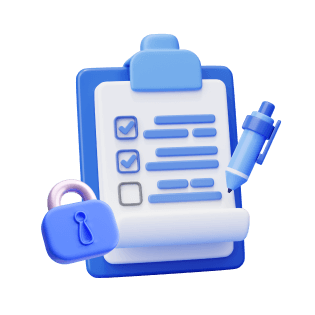
Buy or refinance a property with or without showing your tax returns
How to Secure a Home Equity Line of Credit Without Providing Tax Returns
Understanding HELOCs and Traditional Documentation Requirements
A Home Equity Line of Credit (HELOC) allows homeowners to borrow against the equity in their homes. It provides flexible access to funds when you need them. However, most lenders require extensive documentation before approving a HELOC. One key requirement is your tax returns. But what if you can’t or don’t want to provide them? This article explores how you can secure a HELOC without submitting tax returns.
A HELOC works much like a credit card. You have a credit limit based on the equity in your home. You can borrow as needed, repay, and borrow again. It offers flexibility, making it a popular choice for home improvements or other large expenses.
Traditionally, lenders require several documents to approve a HELOC. These include proof of income, such as pay stubs or tax returns, and verification of your employment status. They use this information to assess your ability to repay the loan. For many, providing these documents is straightforward. But not everyone has a simple income structure.
Self-employed individuals, freelancers, or those with irregular income often face challenges. Their income may fluctuate, and tax returns may not fully reflect their financial situation. This can make it difficult to meet the standard documentation requirements.
How a HELOC Can Provide Help in Financial Flexibility and Debt Relief
A Home Equity Line of Credit (HELOC) solves the problem of accessing needed funds without the constraints of a traditional loan. For homeowners, tapping into their home equity through a HELOC provides a flexible and ongoing source of credit that can be used for various purposes. Unlike a lump-sum loan, a HELOC allows you to borrow only what you need, when you need it, making it ideal for managing unpredictable or recurring expenses like home renovations, education costs, or emergency situations. This flexibility gives homeowners more control over their finances, especially when dealing with expenses that are difficult to plan for in advance.
Additionally, a HELOC addresses the challenge of managing high-interest debt by offering a lower-interest alternative. Homeowners can use a HELOC to consolidate higher-interest debts into a single, more manageable payment. This not only simplifies debt management but can also result in significant savings on interest over time. By leveraging the equity in their home, borrowers can reduce their overall debt burden and free up cash flow for other needs, all while potentially benefiting from tax-deductible interest payments.
Alternative Options for Securing a HELOC Without Tax Returns
If providing tax returns isn’t an option, don’t worry. LBC Mortgage offers alternatives to the traditional documentation process. Here’s how you can secure a HELOC without tax returns:
- Bank Statements: Rather than request tax returns, we can use your 12-month bank statements, either business or personal. We look at your deposits over the 12-month period. Keep in mind, most of your regular deposits offset one another, even if your ending balance is low. What's more important to us is how consistent those deposits are. This is especially helpful for self-employed borrowers or people with irregular income. This option is available on the bank statement for both HELOCs and Home Equity Loans.
- Profit And Loss Statement: If you cannot provide 12 months of bank statements, you may use a Profit and Loss statement for your business from the most recent 12 months. The P&L statement would analyze your revenue versus expenses to ultimately determine how you will manage new debt obligations. This is a very important part of the underwriting process. The Profit and Loss program is currently only available for Home Equity Loans and is not available for HELOCs.
- 1099 Option: For self-employed borrowers who work on a 1099, you may utilize the income reflected on your 1099 to qualify for your Home Equity Loan. No further income documentation is required in this scenario, and you may use your gross income from the 1099 form for qualifying purposes.
- Verification of Employment (VOE): If you are employed now and work on a W-2 but cannot provide W-2 forms or pay stubs, then the lender can use something called a Verification of Employment, or VOE, form to determine your income. Your HR department will need to complete a one-page form that confirms how much you make, and the lender will use that to qualify you for the Home Equity Loan.
- Private Lenders: Traditional banks may not offer flexible documentation options, but private lenders might. These institutions often have more lenient requirements and can be more willing to work with you. But usually private investors offer a short term loans for 12 month term.
The Benefits of a HELOC: Flexible Financing and Debt Management Solutions
A Home Equity Line of Credit (HELOC) gives homeowners flexible access to the equity in their homes. Unlike a traditional loan, a HELOC lets you borrow only what you need, when you need it. This makes it an ideal solution for ongoing or unexpected expenses. Whether you’re planning a home renovation, covering education costs, or handling emergencies, a HELOC offers lower interest rates than most credit cards, providing financial flexibility without the burden of high-interest debt.
HELOC Eligibility Criteria
Securing a HELOC involves meeting several essential requirements, including:
- Equity in Your Home: Significant home equity is usually necessary, At LBC Mortgage we work with lenders that are able to go up to 90% of the home value. For example, if home value is $500,000 and your 1st mortgage is $200,000 you can get a line of credit for $250,000. (90% of 500K is 450K, minus 200K original loan, leaving 250K for line of credit)
- Income: there are 2 ways to get a HELOC, by showing income documentation for 2 years and qualify this way, or using alternative program that was designed for self employed borrowers who unable to show income documents
- Credit Score: A credit score in the mid-to-high 600s is typically preferred, with a minimum FICO of 640 for primary residences and 680 for secondary homes or investment properties. A higher score may improve your loan terms and limit.
- Debt-to-Income Ratio: Lenders usually look for a DTI below 43%, but a lower ratio improves your application. LBC Mortgage considers applications with DTIs up to 50%.
Preparing for the Application Process
Before applying for a HELOC without tax returns, preparation is key. Here are steps you should take:
- Assess Your Equity and Credit Score: Ensure your credit score is good before applying, but connect with us, as we can guide you towards the best solution and help make it work.
- Gather Alternative Documentation: Get a free consultation with us to find out what lender may require, and get personalized guidance to prepare effectively.
- Research and Compare Lenders: We handle the comparisons for you, partnering with over 90 lenders to find the best options tailored to your needs.
Tips for Increasing Approval Chances
To improve your chances of approval, consider these tips:
- Improve Your Credit Score: A higher credit score can offset the lack of traditional documentation. Pay down debt, correct any errors on your credit report, and avoid late payments.
- Reduce Existing Debt: Lenders look at your debt-to-income ratio. Reducing your current debt load will make you a more attractive candidate.
- Provide Detailed Explanations of Income Sources: Be ready to explain your income sources clearly. This can help the lender understand your financial situation better and may increase your chances of approval.
HELOC vs. Home Equity Loan
When comparing a home equity loan to a HELOC, the key difference lies in fund disbursement. A home equity loan provides a lump sum upfront, requiring repayment over a specified term. In contrast, a HELOC offers a line of credit up to a certain limit, allowing you to borrow any amount up to that maximum. Once a home equity loan is repaid, it’s considered settled, while a HELOC remains open for ongoing borrowing.
The interest structures differ as well. Home equity loans usually have a fixed interest rate for the loan's duration, while HELOCs typically feature adjustable rates.

Unique income situation?
We got you covered, let’s discuss it
Achieve Your Financial Goals With LBC Mortgage
At LBC Mortgage, we specialize in helping you unlock the potential of your home’s equity to achieve your financial goals. Whether you’re looking to secure a Home Equity Line of Credit (HELOC), purchase a new home, or refinance your existing mortgage, our team is here to guide you through the process with personalized service and expert advice. We understand that every financial situation is unique, so we work closely with you to find the best loan options that fit your needs, even if traditional documentation like tax returns isn’t available.
Our dedicated mortgage professionals take the time to understand your specific circumstances and provide tailored solutions that offer flexibility and favorable terms. With our extensive network of lenders, we can help you access competitive rates and find loan products that may not be available through other sources. At LBC Mortgage, we’re committed to making the loan process as smooth and stress-free as possible, ensuring you get the financing you need with confidence and peace of mind.